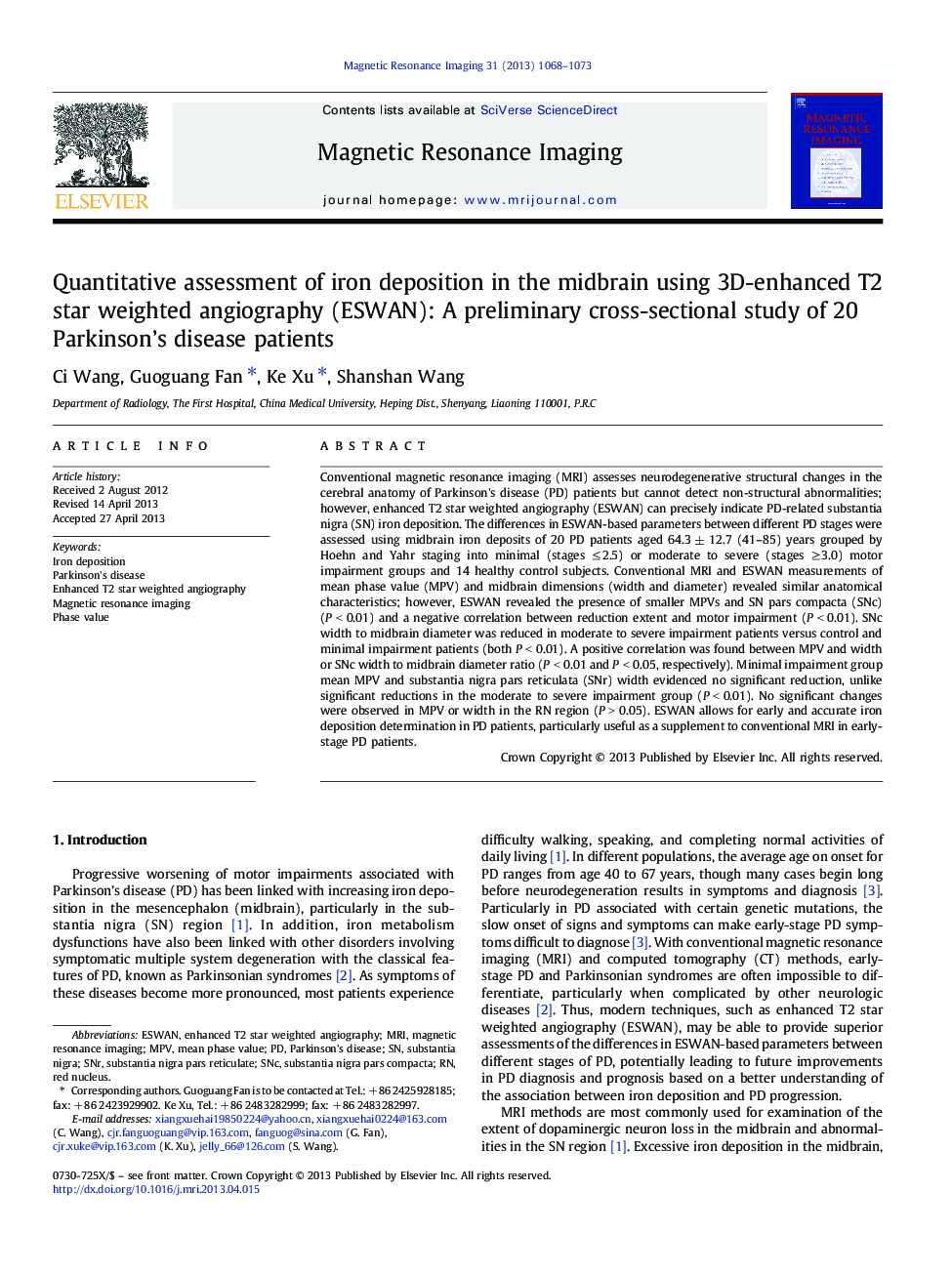| Article ID | Journal | Published Year | Pages | File Type |
|---|---|---|---|---|
| 1806648 | Magnetic Resonance Imaging | 2013 | 6 Pages |
Conventional magnetic resonance imaging (MRI) assesses neurodegenerative structural changes in the cerebral anatomy of Parkinson's disease (PD) patients but cannot detect non-structural abnormalities; however, enhanced T2 star weighted angiography (ESWAN) can precisely indicate PD-related substantia nigra (SN) iron deposition. The differences in ESWAN-based parameters between different PD stages were assessed using midbrain iron deposits of 20 PD patients aged 64.3 ± 12.7 (41–85) years grouped by Hoehn and Yahr staging into minimal (stages ≤ 2.5) or moderate to severe (stages ≥ 3.0) motor impairment groups and 14 healthy control subjects. Conventional MRI and ESWAN measurements of mean phase value (MPV) and midbrain dimensions (width and diameter) revealed similar anatomical characteristics; however, ESWAN revealed the presence of smaller MPVs and SN pars compacta (SNc) (P < 0.01) and a negative correlation between reduction extent and motor impairment (P < 0.01). SNc width to midbrain diameter was reduced in moderate to severe impairment patients versus control and minimal impairment patients (both P < 0.01). A positive correlation was found between MPV and width or SNc width to midbrain diameter ratio (P < 0.01 and P < 0.05, respectively). Minimal impairment group mean MPV and substantia nigra pars reticulata (SNr) width evidenced no significant reduction, unlike significant reductions in the moderate to severe impairment group (P < 0.01). No significant changes were observed in MPV or width in the RN region (P > 0.05). ESWAN allows for early and accurate iron deposition determination in PD patients, particularly useful as a supplement to conventional MRI in early-stage PD patients.
